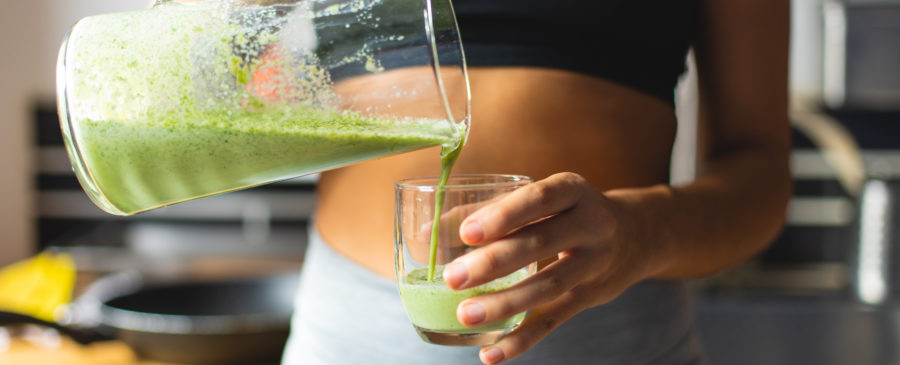The Dieting Dilemma: What Fad Diets Can Teach Us About Marketing

Why do most diets not work? Maybe they will for a while, but then somehow the scale inevitably stops moving, and the fire to push through dims to something more akin to a spark. Frustrating? Absolutely. Inexplicable? I think not. Dieting creates a very special dilemma in most people and it turns out, this conundrum can actually teach us quite a bit about brand perception and effective marketing strategy. So, kick back, grab your dairy/gluten/sugar/flavor-free popcorn, and let’s dig into what fad diets can teach us about getting your brand to stick, better than Atkins ever could.
Decision
Dieting is a delightful concoction of placebo effects. Maybe a celebrity endorses a wild juice cleansing ritual or some scientific research suggests that cutting carbs will turn the body into a fat-burning machine. If we see a diet work for someone else, or we believe it did, we expect it to work for us too. This is marketing priming. We are conditioned to believe a diet will work for us before we even start. And, because of the extra pounds from last winter’s overindulgences, we truly want it to work. It becomes a deeply ingrained desire. And thus, we decide to try it on for size.
Doubt
Somewhere along the way, let’s say a month or two into our New Year’s Resolution to eat excessive amounts of kale and little-to-no dairy, we get a ping from our favorite fit-fluencer’s social media account. A new post reads: “What I Eat in a Day Doing Keto.” A reel in the background shows images of buttery steaks and creamy lattes, but not a shred of bread in sight. The dairy we have been missing the past few months beckons. We feel better, look good as ever, and even others have started to notice. But now, with a new fad diet craze creeping in, doubt starts to flourish.
Ditched
When we learn of a supposedly hot new diet, it can create doubt with the plan we are on. Our suddenly not-so-brilliant decision to drink excessive amounts of green juice each day is replaced by the now-more-glamorous seeming low carb journey that seems to be making the rounds. We start to see more butter and bacon everywhere and practically forget what cake and chips taste like. Our dairy-free, kale-heavy diet now seems inferior and the keto brand becomes superior. And so, the temptation to ditch the old for the new becomes irresistible. But more importantly, the confidence we had in our diet plan starts to crumble, even if only slightly. But that’s not all. The physiological progress actually starts to fall away too, and measurably so. The diet stops working, and so, it gets ditched.
Doom?
This is a demonstration of what I call the ricochet effect in marketing, which occurs when a powerful brand has the power to negatively impact the performance of a competitor. Our beliefs are powerful enough to hold us back to the point where we begin to underperform physiologically. So, are all fad diets doomed to fail? No, at least not necessarily. But the cycle of craze after craze makes succeeding that much more difficult. The next big thing can take our eyes off the prize and make us feel like we are missing out. Worse, our belief that it might not work can actually make it stop working. This is the powerful placebo effect of brands, or as I coined it, BRANDcebo.
Distraction
This same phenomenon can happen with any brand. Maybe we are selling an exercise service that focuses on Pilates but a new research article goes viral suggesting that running is the quickest way to burn fat. Or maybe we sell baby products that aid in development but a competitor comes out with something completely different and our customers start getting curious about what they might be missing. Desire to have the best of what’s out there is perfectly natural. Our job is to convince our customers, beyond a shadow of a doubt, that our brand is in fact the best, and not to get distracted by shiny objects.
Digging
But what is really going on here? To answer that, we first need to dig a little further to understand the mechanisms at play. These side effects of a strong brand might make us wonder: can desire for a specific brand actually negatively impact not only the perception, but the performance, of a competitor? My research suggests a resounding yes. In my study, children were asked to race each other, while wearing both Nike-branded shoes and those same shoes marked with an “inferior” brand. The non-Nike kids performed worse than those wearing the “superior” brand, and measurably so. This is clear evidence of the Ricochet Effect at work. So, let’s keep digging to look into how we can harness this concept for the benefit of our own brands…
Dialogue
So, how can brands avoid this negative ricochet effect, and achieve the opposite, desired effect: brand loyalty? By staying on top of any potential doubts, and by being the new distraction. This means keeping up with (and staying ahead of) the latest trends. Continuously assess your customers’ wants and needs. Try out a social media poll to gauge opinions. If something new, like a piece of relevant research or a competing product comes out on the scene, address it with your customers. Post a blog about the research and explain what your brand can offer to them.
Use the appropriate tools and tactics to show how you can match the trend or explain why your product really is unparalleled on the market. If necessary, be willing to create new advancements with your products or services that can stay up to date with the latest technology, science, and trends. Above all, keep communicating. Use the best digital content marketing tools to have a continuous dialogue with your customers. Listen to them and provide the answers they need to stay focused on what matters: YOUR BRAND.
The ricochet effect is just one ingredient to consider when cooking up the powerful placebo effect of brands, or BRANDcebo. Buy my book here, to find out the recipe for success for your brand. Until then, Bon Appetit!
